We’ve all heard the jokes, business at the front, party at the back. 29/27.5” Mullet bikes are a red-hot topic, from the DH World Cup to heated discussions with your mates. But before you ruin your bike and bank balance with a wheel swap we dive deep into mixed wheel sizes to see if you really can have the best of both worlds.
What is a mullet bike?
A mullet bike is one that mixes wheel sizes – most commonly a 27.5” wheel in the back and a bigger 29” wheel up front. Some brands like MDE, LAST, Liteville and Foes (and many eMTB brands) sell mixed wheel size bikes as standard, while many other mullet bikes have been created when curious riders have squeezed a 29” wheel into the front of their 27.5” bike, or a 27.5” wheel into the back of their 29er. On paper, it sounds great, the best of both worlds, with a 29” front wheel for grip and rollover and an agile, flickable rear wheel for mid-corner parties. Is a 29” front wheel and 27.5” rear the perfect combo?

Mullets are nothing new – a brief history
Recently, mullet bikes have been slingshotted into the spotlight due to being showcased at the EWS and Downhill races (now that the UCI have relaxed their sanctions on mixed wheel sizes in competition). Seeing elite downhill and EWS racers taking to the start line with mulleted bikes ignited a fire amongst many curious home mechanics. Is there an advantage to a mullet bike? Or is it simply a panicked response of squeezing a faster rolling 29er wheel into an outdated chassis? Whatever the reason, mullet bikes were here long before the Tiger King. The Specialized BigHit from 2004 mixed a 24” rear wheel with a 26” front wheel for maximum gnar and in 2009 Trek brought us the 69er with a 26” rear wheel and towering (at the time) 29” front wheel. Having been around for more than 15 years, why hasn’t the mullet concept gained more traction? Let’s look at how the different wheel sizes match up.
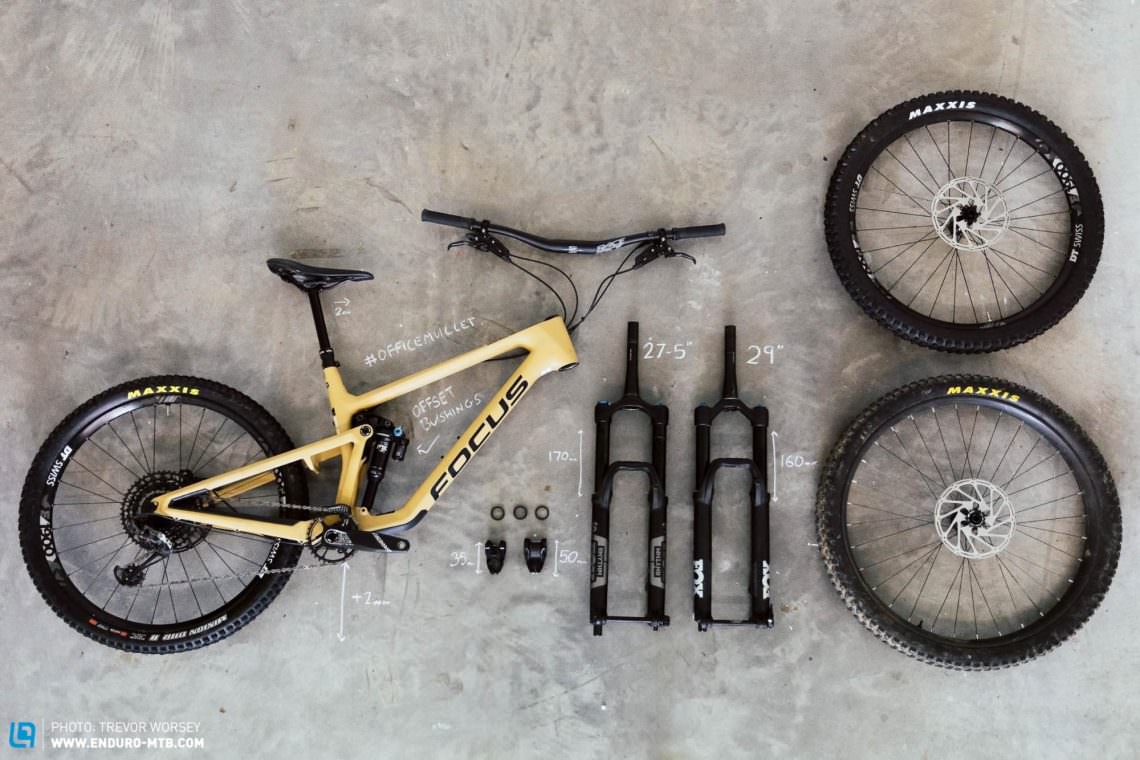
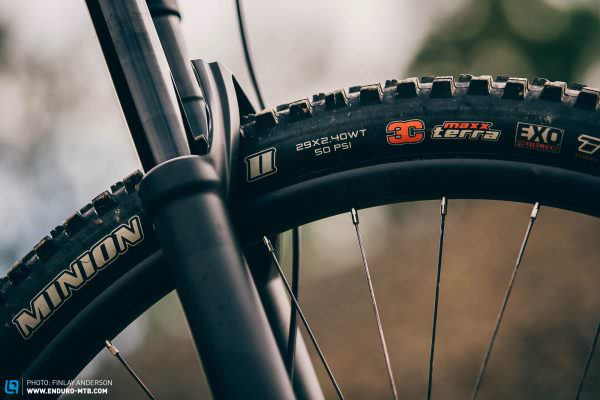
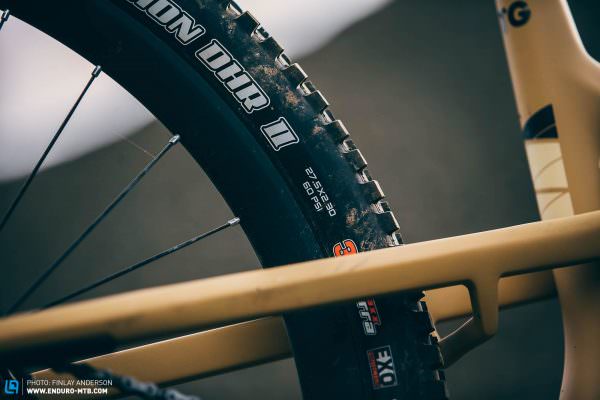
Why does a bigger 29” wheel roll more easily and offer more grip and stability?
Why does a 29” wheel roll better? Ignoring suspension for a second and focussing purely on wheel size, when a wheel contacts an obstacle it forms a virtual ramp – think of it as a line connecting the top of the obstacle with the contact patch of the tire. This ramp is the angle the wheel has to move in to travel up and over the obstacle. The steeper this angle, the harder it is for the wheel to get up and over the obstacle. A bigger wheel moves the contact patch away from the obstacle, reducing the ramps angle, and thus making it easier for the wheel to roll over it. While a 29” wheel only increases this distance by about 5% compared to a 27.5” wheel, over thousands of impacts this soon adds up to lower rolling resistance and less fatigue on the trail. With a 29” wheel, the higher axle also means that compared to a 27.5” bike, the rider and bike’s centre of gravity are lower relative to the wheel’s axle, further stabilising the bike. Finally, the bigger 29” wheel has a larger contact patch providing more grip from the tire at the same given pressure. Simple physics tells us that a 29” wheel rolls over bumps better, is more stable and has more grip.

Why is a 27.5” wheel more agile?
While it may lose out in the grip, rollover and stability stakes, a 27.5” wheel still has many advantages. The smaller diameter and reduced rotating mass mean that given the same input, the smaller 27.5” wheel accelerates faster, meaning that pumping it down transitions and through berms will generate speed faster. Grip is also not everything – the smaller contact patch of a 27.5” wheel means the tire breaks traction and drifts more easily, so if you are a fan of cutties and aggressive turns, a smaller rear wheel will let you hang loose easier. The smaller physical size means that the rear wheel is less likely to kick you up the ass on drops and when the trail gets really steep. Again, simple physics tells us that a 27.5” wheel accelerates faster, is more playful in turns and easier to drift, providing more room for gymnastic shapes.

So should I mullet my bike?
That’s the theory out of the way but before you head out to the garage to try and hammer a different wheel size into your frame, there are a few things you need to think about. Changing the wheel size of your bike is a big change and can be expensive. At the very least you will need a new wheel and tire, but most probably a new fork and possibly a new bar and stem. Changing the wheel size of your bike will also have large implications for the geometry of your bike, which needs to be corrected unless you want an unbalanced ride. But done properly, there are many reasons why mulleting your bike is a tempting idea and it could potentially help in the following scenarios:
More control in rocky terrain: A bigger 29” wheel rolls more easily over big, square-edged hits like rough rock gardens. The wheel will hang up less and the steering will be more controlled.
More ass clearance: If you ride a 29er down very steep trails and often get kicked up the butt by the rear wheel over steep drops, you may want to go the other way and fit a smaller rear wheel for better clearance.
Livelier cornering: If you find your 29er a bit of a handful in corners or love an inside line, then swapping in a 27.5” rear-wheel may improve the cornering. A smaller rear wheel is easy to flick from side to side and you will have more clearance for gymnastic shapes.
Slacker geometry: If you love going off the brakes, you may love the increased stability of a bigger 29” front wheel. Mulleting your bike will slacken out the head-angle and reduce rolling resistance, speeding up your ride.
Because it’s cool: Maybe you have a spare wheel from a different bike? Maybe you’re curious or maybe you just want to try something new. Mulleting your current bike is far cheaper than buying a new one. It could be an awesome experiment but results aren’t always guaranteed.
All you need to know before you mullet your bike
If you think that mulleting your bike sounds awesome, we have prepared this checklist to let you know what to look out for and how to correct some of the problems that may occur.
It will change the geometry of your bike
Hopefully, at some point during the design of your bike, an engineer agonised over each and every number, incrementally tweaking the tube angles on the CAD design until everything was in perfect harmony. Little did they know that you were planning on changing everything by throwing a bigger, or smaller, wheel into the mix. Adding a bigger front wheel or a smaller rear wheel will have a massive impact on your bike’s geometry, slackening the head and seat tube angle, shortening the reach, and raising or lowering the bottom bracket.
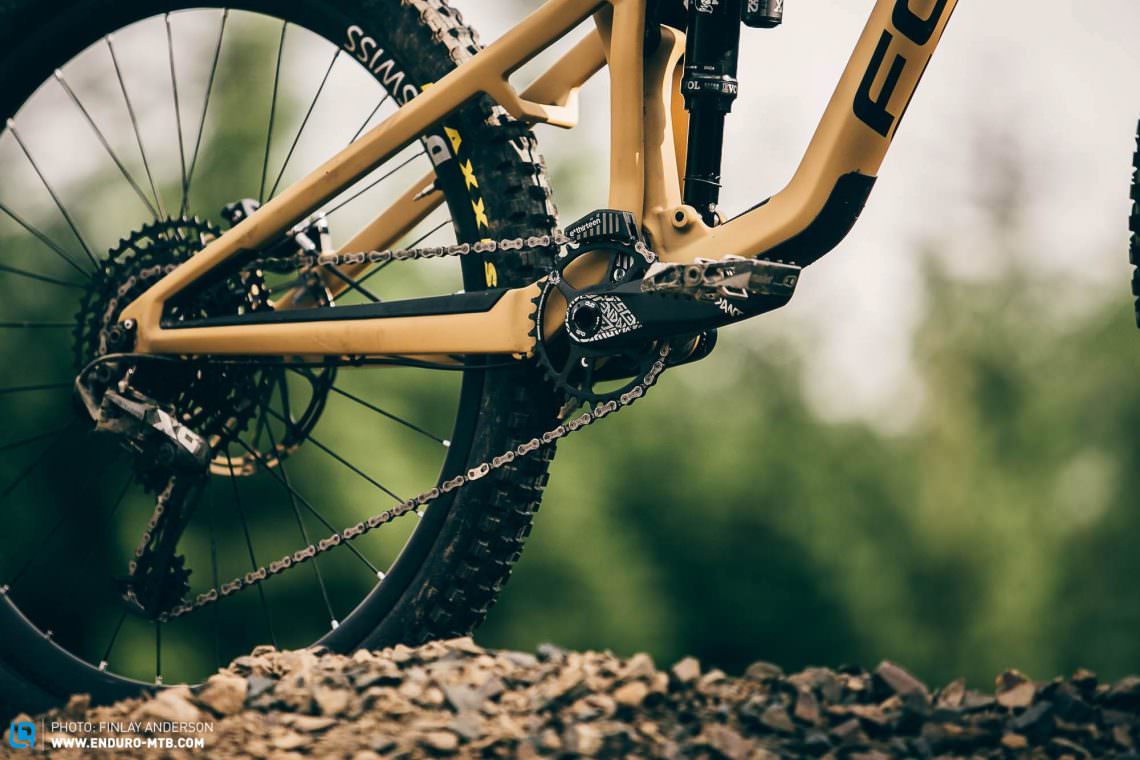
Your bottom bracket height will change significantly
Engaging our high school trigonometry kung fu, we can quickly calculate that swapping in a 29” in place of a 27.5” front wheel will result in an approximate 20 mm increase in the height of the front axle (assuming the same tires), lifting the bottom bracket by 7.1 mm (assuming a 1200 mm wheelbase and 440 mm chainstay length). Inversely, putting a 27.5” rear wheel at the back of a 29” bike will lower the rear axle 20 mm and (because it is closer to the rear axle) result in a very significant 12.7 mm bottom bracket drop (again assuming a 1200 mm wheelbase and 440 mm chainstay length). If you already have a low bottom bracket be wary of pedal strike.
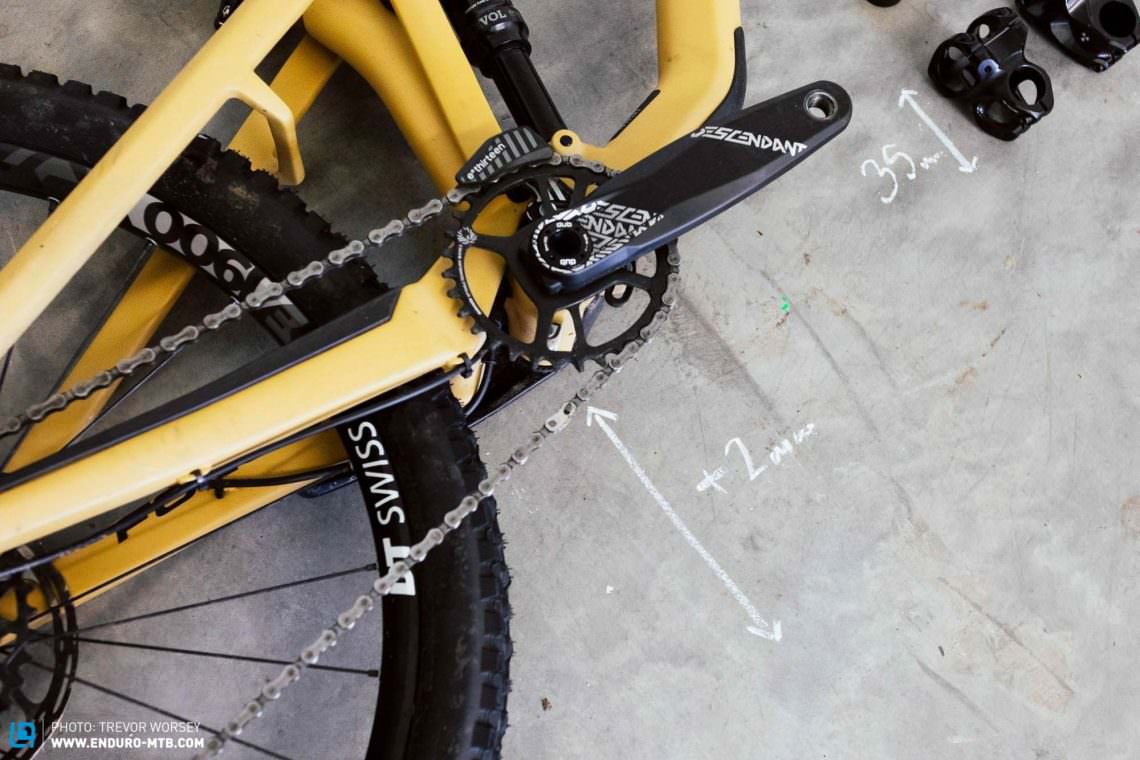
Using offset bushing to correct bottom bracket height
Offset bushings are a modified shock bushing that can be used to adjust the geometry of your bike by lowering the bottom bracket and slackening the head angle (or vice versa). Offset bushings fulfil the same function as a flip chip, decreasing the effective eye-to-eye length of your shock to lower and slacken the bike geometry. Offset bushings do not reduce the amount of travel available to your bike. In general, fitting two offset bushings can reduce (or increase) the bottom bracket height of the bike by up to 10 mm. It’s worth noting that you cannot fit offset bushings into a trunnion shock mount and they will also slacken or steepen your seat and head tube angle.

Big suspension travel changes aren’t a real solution
Reducing fork travel by 10 mm results in an approximate 3.3 mm drop in bottom bracket height, so you would need to reduce fork travel by over 20 mm to correctly compensate for the bottom bracket height with a 29” front wheel. Such a big change in travel isn’t always feasible (or desirable), so you may have to accept that the bottom bracket will be higher with a bigger front wheel or lower with a smaller rear wheel.
The reach of your bike will be shorter
When you raise the front of your bike or lower the rear, you are rotating it around the rear axle. As such the effective reach will be reduced making your bike feel more compact. If you want to maintain a similar reach, you will have to fit a longer stem and if possible, change the rise on your bar or remove spacers from underneath your stem.
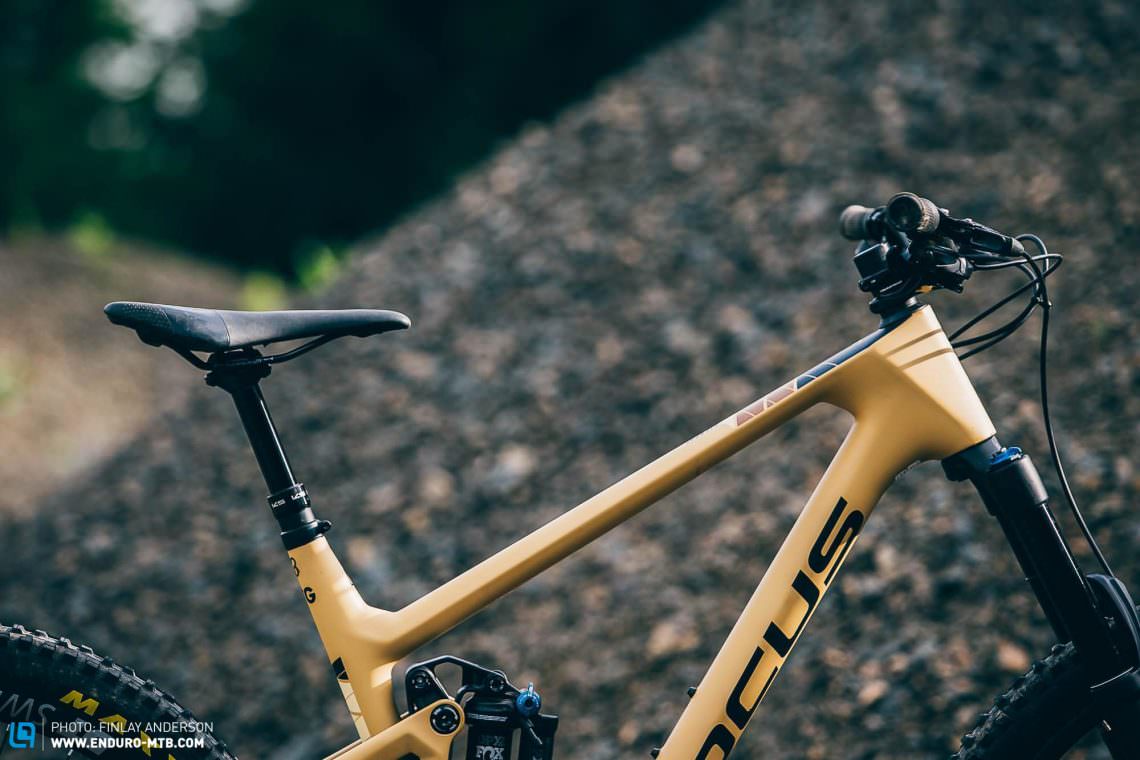
Do you have spacers under your stem?
To change the effective reach of your bike, you can add or remove spacers under your stem. As you do this, you change the position of the stem on the steerer tube. Because it’s at an angle, changes in height have an impact in the horizontal plane too. For example, if your bike has a 65° head angle, a quick bit of trigonometry shows that for every 10 mm of spacers you add or remove, the stem moves 9.06 mm vertically, but importantly 4.22 mm horizontally.
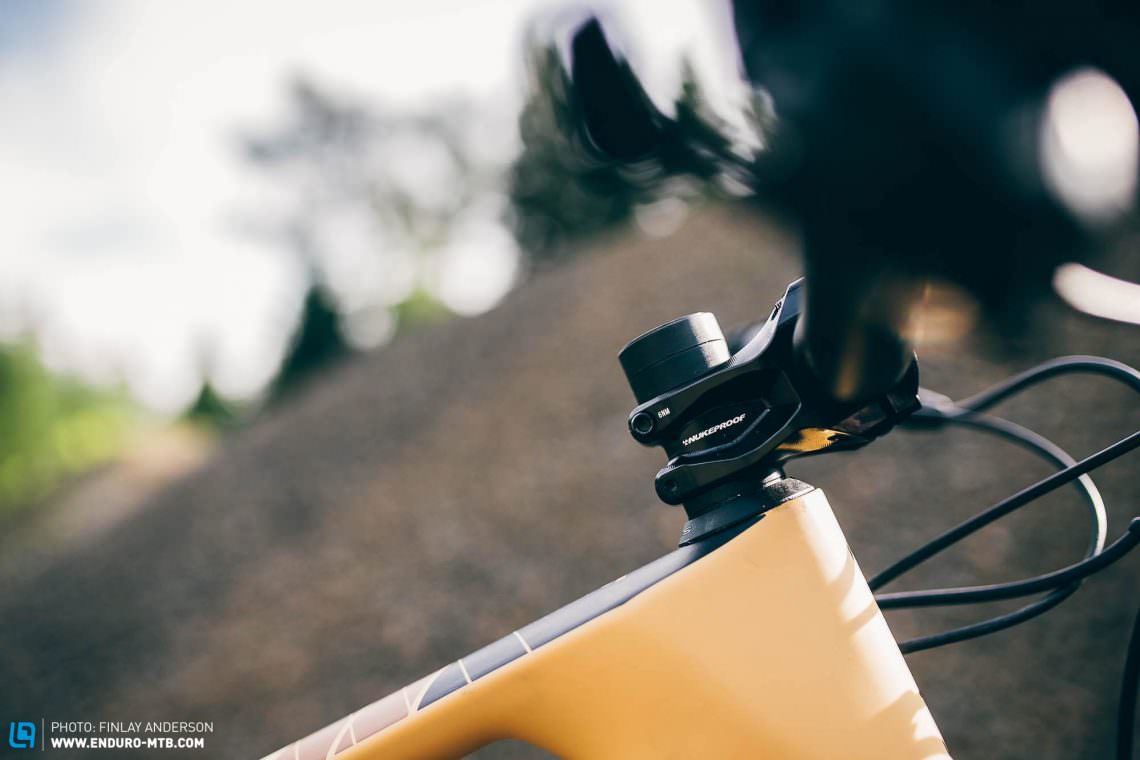
Fit a longer stem and lower rise bar
Fitting a larger front wheel will raise your stack height and shorten the reach, changing the relationship between your feet and hands. To compensate you may want to run a slightly longer stem to apply more weight onto the front wheel. This will move your weight forward and correct for the increased stack and decreased reach. If you have riser bars, you may want to fit a flatter option. Unlike changing the spacer stack, changing the rise of bars has no impact on the grip position in the horizontal plane in relationship with the head tube.
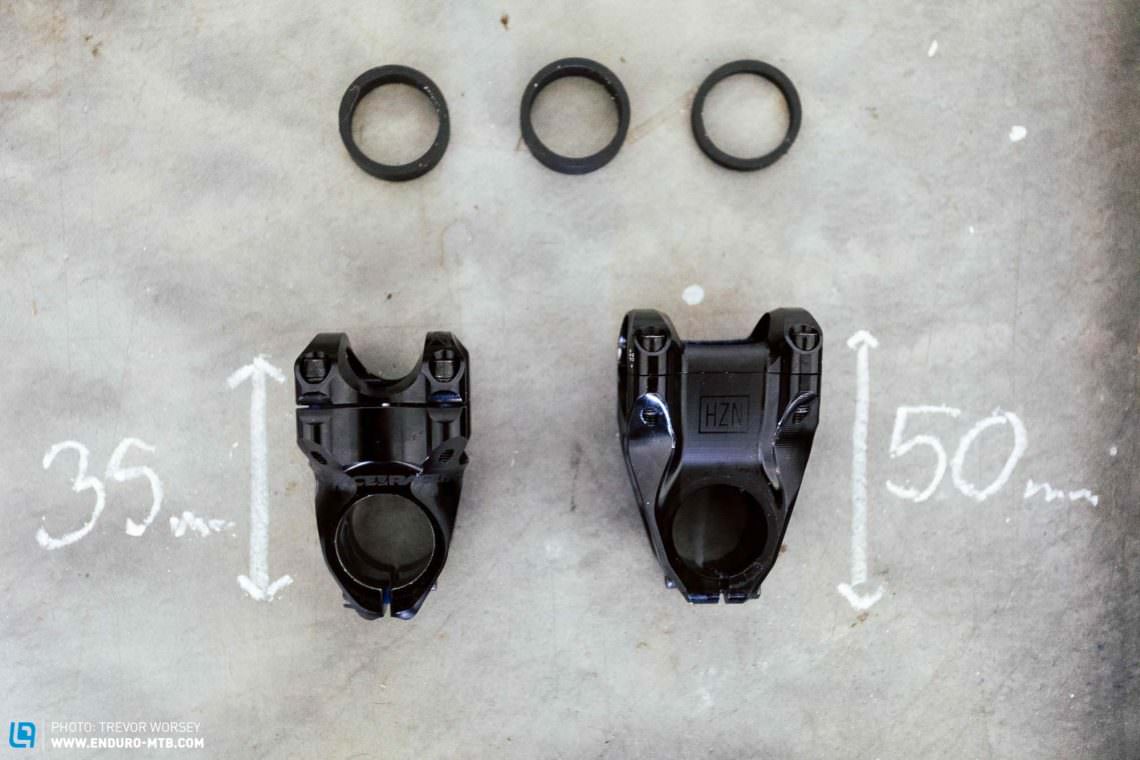
You will need to move your saddle forward
Increasing the stack of your bike by 30–40 mm will slacken the seat angle of your bike by approximately 1–1.5°. To counter this, you can slide your saddle forwards on its rails. Moving the saddle fully to the front or rear can result in an effective ± 2° change in seat angle, but will in turn shorten or lengthen the effective top tube length (how far your bars are away when seated).
It’s not cheap
At the very least you will need a new wheel and tire, either a 29” or 27.5” depending on what you are planning to do. You will probably also need a new fork if you currently have a 27.5” fork and are planning on running a 29” wheel up front. There have been occasional success stories squeezing a 29” wheel into a 27.5” fork, but we wouldn’t recommend it as clearances are extremely tight and it limits tire choice.
You may want to upgrade your front rotor
If you step up to a bigger 29” front wheel, the increased rotating mass is a good reason to upgrade your front brake. Stepping up from a 180 mm to a 200 mm rotor, or 200 mm to a 220 mm rotor, can increase braking torque by 30% without a significant increase in weight.
Will I have to adjust my suspension?
If you make a big change to your bike’s geometry you will affect your position on the bike and how it rides. Unless you compensate for the changes fitting a bigger front wheel or smaller rear wheel will move your weight rearward and you’re likely to need a little more air pressure (or a firmer spring) or increased low-speed compression in your shock.

Will I void my bike warranty?
This is difficult to answer but it is likely that fitting a new wheel size in the front will void your bike’s warranty. If your bike is still under warranty, it may be worth checking the small print.
So, is a mullet better? Will it transform your bike into a corner schralping, shred machine? We built our own mullet machine to find out.
Is a mullet better?
Now we’ve explored the theory, how does it work in practice? Here at ENDURO, we like to roll up our sleeves and we couldn’t resist mulleting a bike to test the effects first hand.
But which bike should we choose? Ideally we wanted a 27.5” bike that might benefit from a bigger 29” front wheel. We soon found the perfect bike. Having ridden it previously in our budget enduro bike group test, we loved the 27.5” FOCUS SAM’s commitment to fun and agility, concluding, “The FOCUS SAM is a bike made for those with a playful riding style, always out to have a good time. It’s not a high-speed plough on the hunt for seconds on the clock, but it’ll turn any trail into a playground.” What would happen if we swapped in a 29” front wheel – would that give it more high-speed stability without sacrificing its playful nature? To find out, we created our own #officemullet!
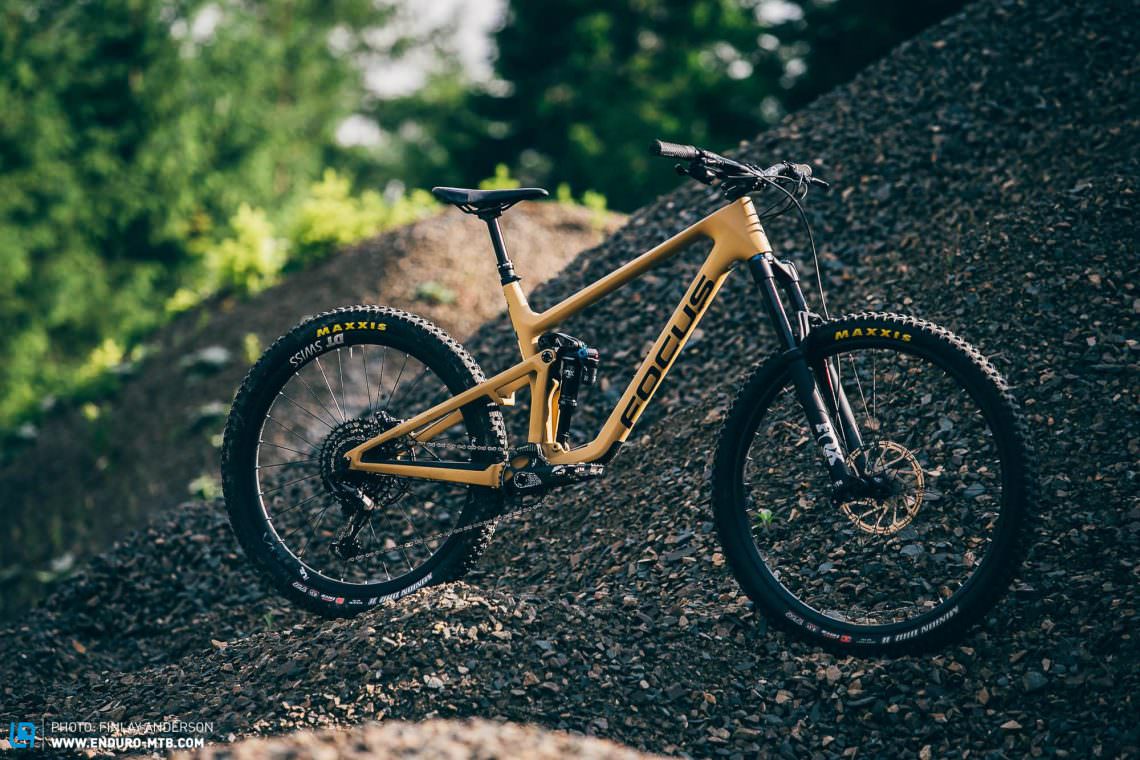
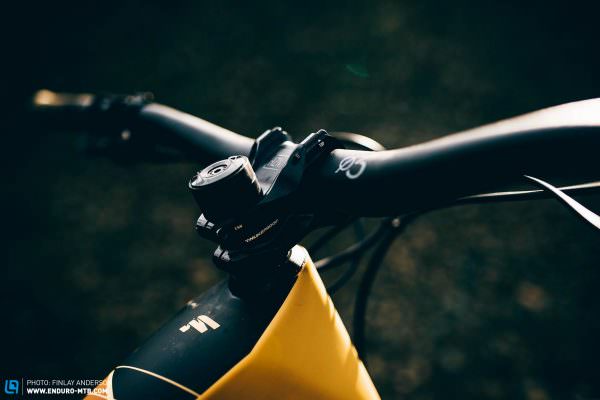
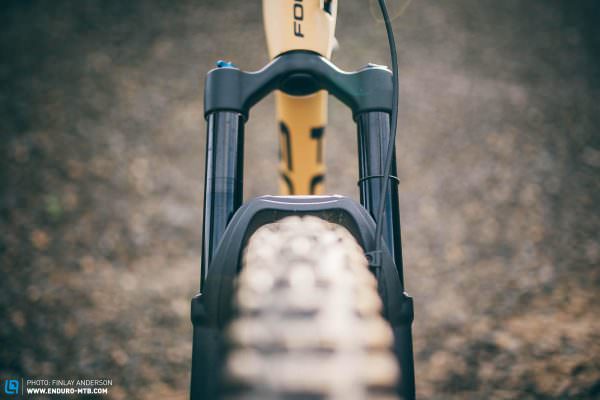

Giving the FOCUS SAM a new haircut – what we changed
The FOCUS SAM 9.9 is a bike with some serious travel, fitted as standard with a FOX 36 Rhythm 27.5” 170 mm fork with a 559.1 mm axle-to-crown height. We wanted to keep the long-travel ethos, so swapped in a 160 mm travel FOX 36 Rhythm 29” with an axle to crown of 567.1 mm. Combined with the 19.1 mm rise in axle height from changing to the bigger wheel and assuming a 1° slacker 64° degree head angle (without obsessing over the decimal points too much), some quick calculations tell us that the stack will go up from 623 mm to around 646 mm, leaving the bars around 23 mm higher. Our test bike was fitted with 20 mm of spacers below the stem, so we removed them, dropping the bars 18 mm and simultaneously moving them 9 mm further forward. To help fully correct for the shortened reach, we also changed the stem from the stock 35 mm option to a 50 mm. After these changes, although the stack and reach are a little taller and shorter respectively in the mullet configuration, the riding position was nigh on identical to the original setup.

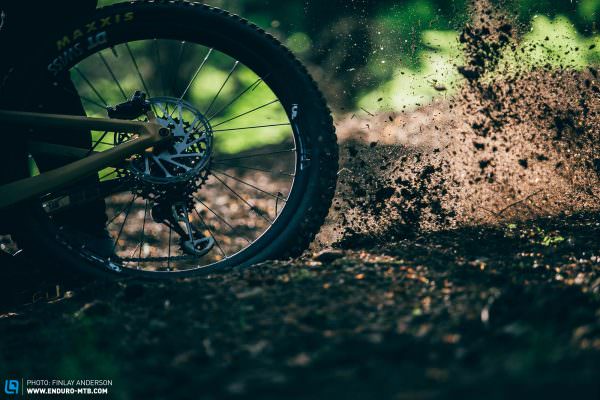
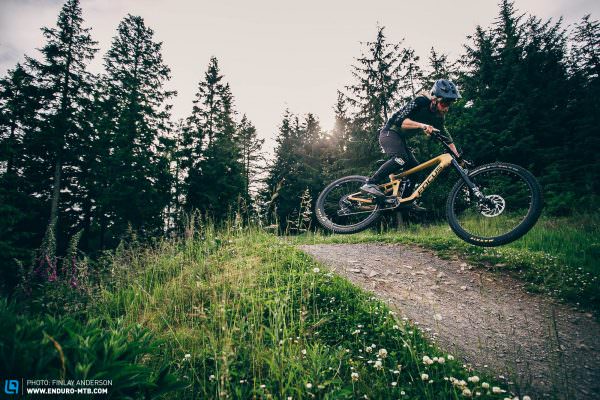

Next was the bottom bracket height. With Maxxis Minion DHRII 2.4” WT tires fitted, we measured the actual bottom bracket height of the 27.5” standard bike at 338 mm. Changing to a 29” front wheel raised the bottom bracket around 8 mm to 346 mm. To reduce this, we fitted two offset bushings to the FOX DPX2 shock, bringing the bottom bracket back to 340 mm, only 2 mm higher than standard. The offset bushing caused further slackening of the mullet bike, measured using our (accurate enough) gauge with a head angle of 63.4° (compared to 64.8° as standard) and seat tube angle of 73.8° (compared to 75° as standard). The last thing we did was push the saddle 2 cm further forward on it’s rails to offset the slacker seat tube and rotated the controls on the bar to match the original angles. We now had our FOCUS SAM #officemullet and it looked wild! But how did it ride?
Totally differently… Despite correcting the handlebar position, the riding position on the mullet configuration feels immediately different. The bike feels more compact with the saddle shifted forwards and is observably slacker, like a compact DH sled. Rolling up to speed, the gyroscopic stability of the bigger front wheel is immediately obvious and combined with the slacker head angle, the front wheel feels more stable in a straight line. It tracks better and is much less disturbed by impacts. Even with 10 mm less travel up front, the FOCUS SAM mullet feels significantly more capable of holding aggressive lines through root and rock gardens, hanging up less over square edges.
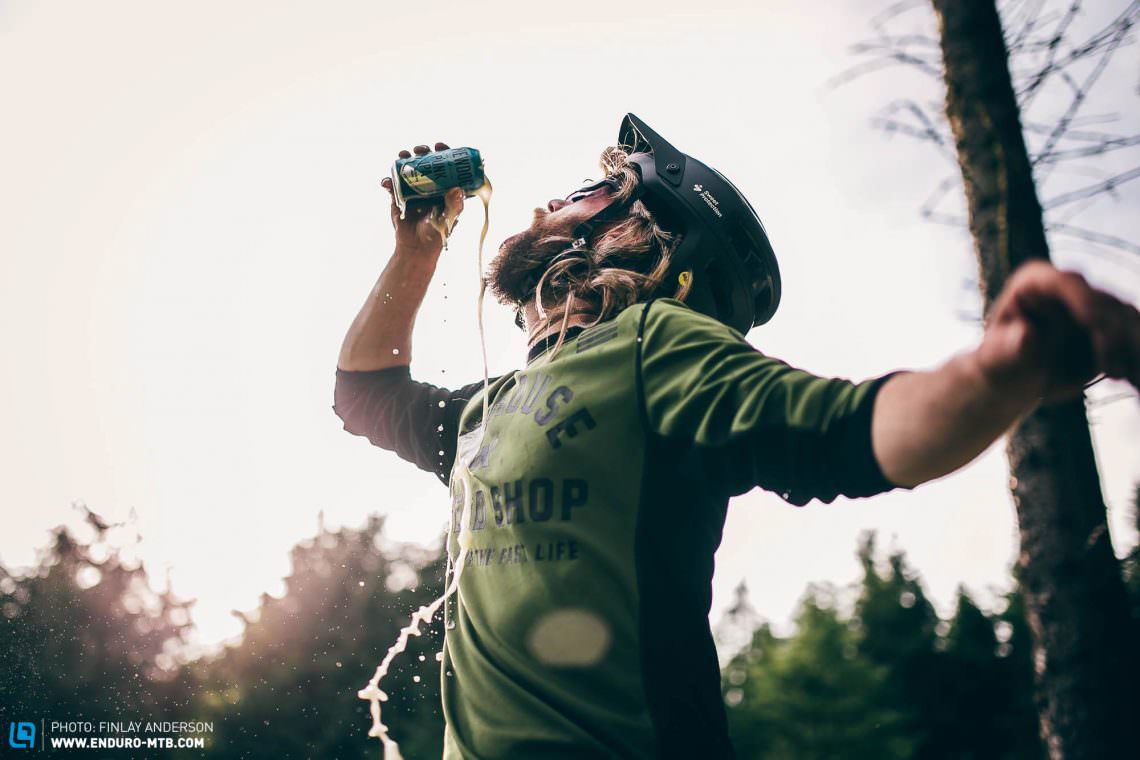
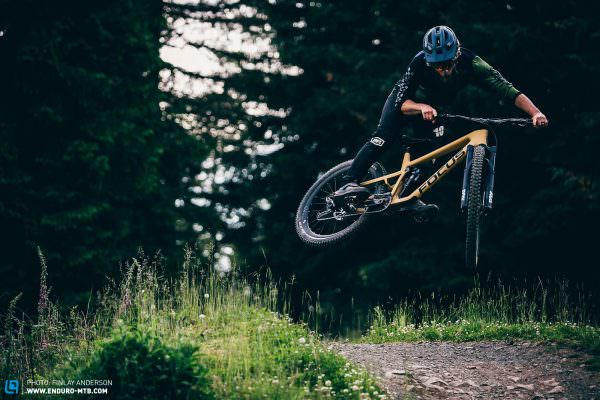
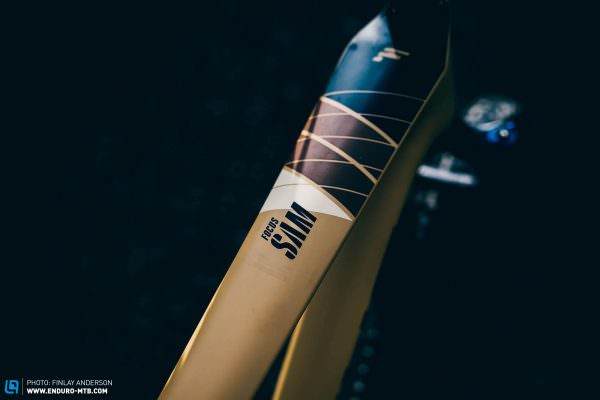

We found we were charging harder into rocks and taking more direct lines. With the slightly ‘rolled back’ position, manuals and wheelies are effortless and even a manual-muppet will be able to pop the front wheel.
The increase in stability of the 29” front wheel amplifies how much looser the smaller 27.5” rear wheel feels in comparison. With a smaller contact patch and reduced gyroscopic forces at the back, our FOCUS SAM mullet loves to wag its tail. Cutties, drifts and inside lines are effortless, with the small rear wheel encouraging us to play and the large front one keeping us out of trouble when we push it too far. The bike is especially good on steep terrain with its taller stack, while the huge clearance between your ass and the back wheel lets you happily throw the bike around, revealing a nimbleness around 90 degree turns that pure 29ers cannot match. On steep trails and for pure fun, the #officemullet is a victory, a total ripper…
But… then we had to pedal to the top again and we found that not all the changes were positive. There’s a reason that designers agonise over the angles and look for a balanced ride. Fitting a big 29” front wheel into our 27.5” frame resulted in an imbalance which is most evident on flatter, pumpier terrain, with a feeling of riding behind the front wheel rather than in the centre of the bike through corners. It isn’t necessarily a bad feeling but it’s clear that we’ve made big changes to a once very balanced bike. Climbing is also tougher on the mullet, where the more rearward position reduces weight on the front wheel and makes steep and technical climbs a pain. We could extend the stem further, or remove the offset bushings, which we tried, but this negatively impacts on cornering. We found ourselves at the point where every further change came at the detriment of something else. Downhill and for playful riding we love our mullet, hooning through every shralp, but overall, the bike has been left compromised.
We really enjoyed giving our FOCUS SAM a new haircut. Maybe you’ll see it on the trails, coming in hot on the inside!
To summarise the tops of the mullet FOCUS SAM
- improved stability of the front wheel, especially through root and rock gardens
- great for riders who enjoy drifting and inside lines through corners
- great steep trail performance
The negatives we found
- the bike feels less balanced on flatter terrain
- climbing is less efficient and the front wheel wanders
- the seated position is more compact

Is it worth it – should you mullet your bike?
With so many variables, it’s an impossible question to answer. While the changes we experienced were not all positive, we really fell in love with the drifty ride of our mullet FOCUS SAM, adding a dose of stability and riotous steep terrain ability to the playful bike. However, were these changes worth the considerable cost of a new 29” fork, new front wheel, new tire, new stem and a set of offset bushings? If we were spending the money ourselves, we would say no. While for some, the benefits of a mulleting their own bike will be worth the expense, and ours was undoubtedly awesome fun, overall we missed the balanced feel of the bike that the designer intended.

In theory, mullet bikes make a lot of sense but exercise caution before changing the wheel size of your bikes as the results might be unpredictable. Mullets have a place though and as the MTB scene shifts from ‘fast times’ to ‘good times’ and drifty, playful cornering becomes the new goal, we’re sure we will see many more purpose-designed mullet bikes with corrected geometry hitting the market, ready to remove spadefuls of dirt from every corner.
Did you enjoy this article? If so, we would be stoked if you decide to support us with a monthly contribution. By becoming a supporter of ENDURO, you will help secure a sustainable future for high-quality mountain bike journalism. Click here to learn more.
Words: Photos: Finlay Anderson, Trev Worsey









